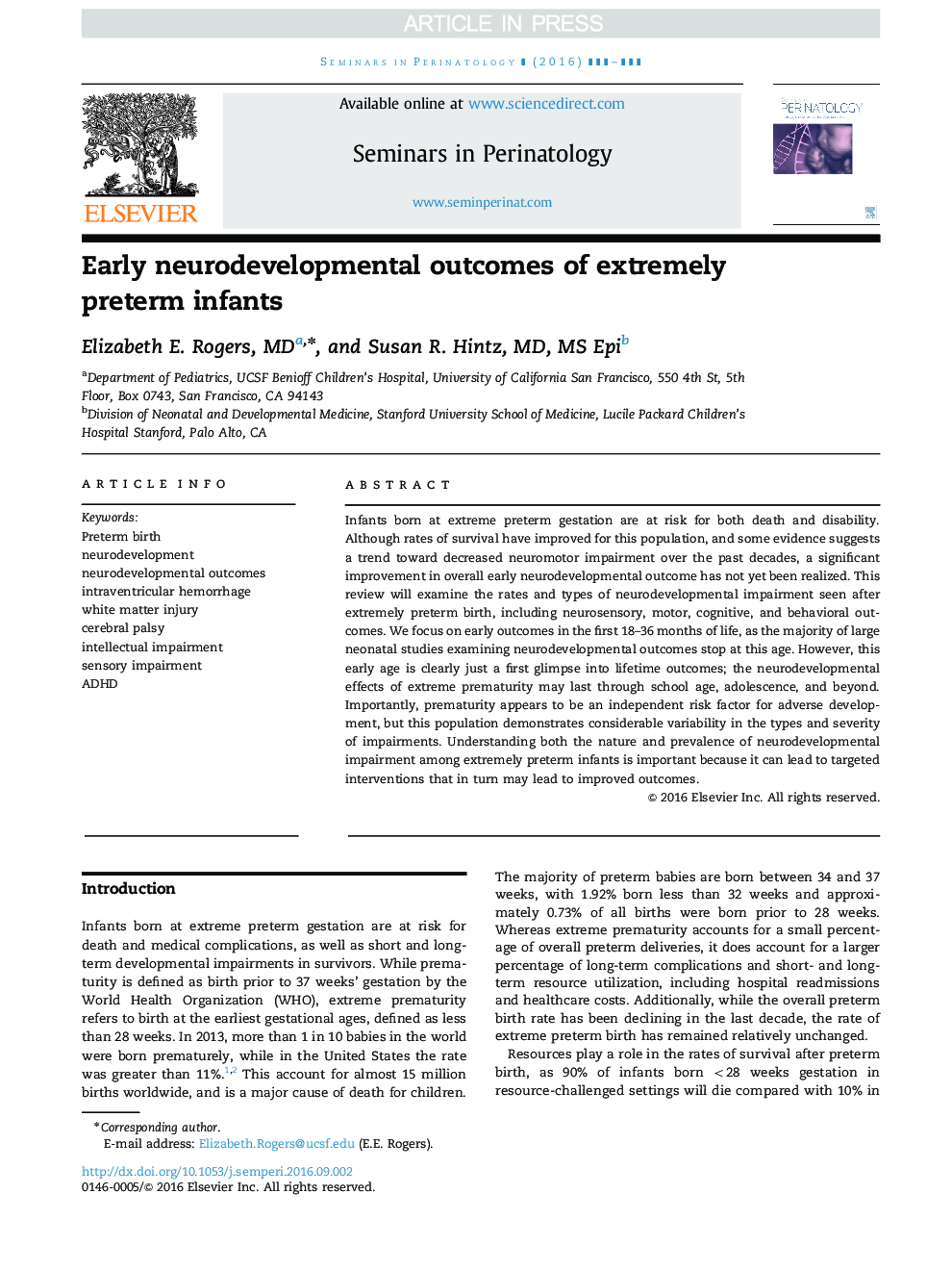| Article ID | Journal | Published Year | Pages | File Type |
|---|---|---|---|---|
| 8768621 | Seminars in Perinatology | 2016 | 13 Pages |
Abstract
Infants born at extreme preterm gestation are at risk for both death and disability. Although rates of survival have improved for this population, and some evidence suggests a trend toward decreased neuromotor impairment over the past decades, a significant improvement in overall early neurodevelopmental outcome has not yet been realized. This review will examine the rates and types of neurodevelopmental impairment seen after extremely preterm birth, including neurosensory, motor, cognitive, and behavioral outcomes. We focus on early outcomes in the first 18-36 months of life, as the majority of large neonatal studies examining neurodevelopmental outcomes stop at this age. However, this early age is clearly just a first glimpse into lifetime outcomes; the neurodevelopmental effects of extreme prematurity may last through school age, adolescence, and beyond. Importantly, prematurity appears to be an independent risk factor for adverse development, but this population demonstrates considerable variability in the types and severity of impairments. Understanding both the nature and prevalence of neurodevelopmental impairment among extremely preterm infants is important because it can lead to targeted interventions that in turn may lead to improved outcomes.
Keywords
Related Topics
Health Sciences
Medicine and Dentistry
Medicine and Dentistry (General)
Authors
Elizabeth E. MD, Susan R. MD, MS Epi,
